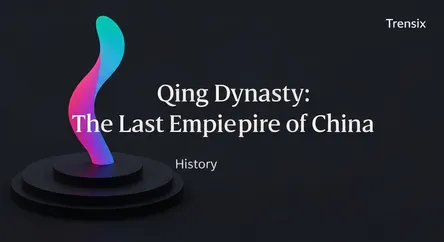History
Qing Dynasty: The Last Empire of China

An overview of the Qing Dynasty (1644-1912), China's last imperial dynasty, its rise under the Manchus, its cultural peak, and its eventual decline.
What is it?
The Qing Dynasty, also known as the Manchu dynasty, was the last imperial dynasty of China, lasting from 1644 to 1912. It was established by the Manchu people from Manchuria who conquered the preceding Ming Dynasty. The dynasty's territory expanded significantly, at its peak being the fourth-largest empire in world history and assembling the territorial base for modern China. The reigns of emperors Kangxi, Yongzheng, and Qianlong marked a period of great prosperity and stability known as the "High Qing era." However, the 19th century saw the dynasty face internal revolts like the Taiping Rebellion, foreign aggression such as the Opium Wars, and official corruption, leading to its eventual overthrow by the Xinhai Revolution in 1911.
Why is it trending?
Interest in the Qing Dynasty remains high due to its profound impact on the formation of modern China. Its history is central to China's "Century of Humiliation" narrative, which explains the country's modern struggles with foreign powers. Furthermore, the territorial claims of the People's Republic of China are often based on the extent of the Qing empire. The dynasty is also a popular subject in media, with numerous period dramas focusing on its emperors and court life, keeping it relevant in popular culture. Renewed academic interest explores its multi-ethnic nature and how the Manchu rulers governed a diverse population.
How does it affect people?
The legacy of the Qing Dynasty directly affects people today, primarily through the geopolitical landscape of modern China. The vast territory it governed formed the basis for the borders of the modern Chinese state. Its administrative structures and meritocratic civil service system influenced the development of modern Chinese governance. The dynasty's promotion of the Beijing dialect as a lingua franca has had a lasting impact on the modern standard Chinese language. Culturally, the Qing period's art, including porcelain and painting, continues to be celebrated. The concept of China as a multi-ethnic nation (Zhonghua minzu) also has its roots in the Qing period's governance over various peoples.